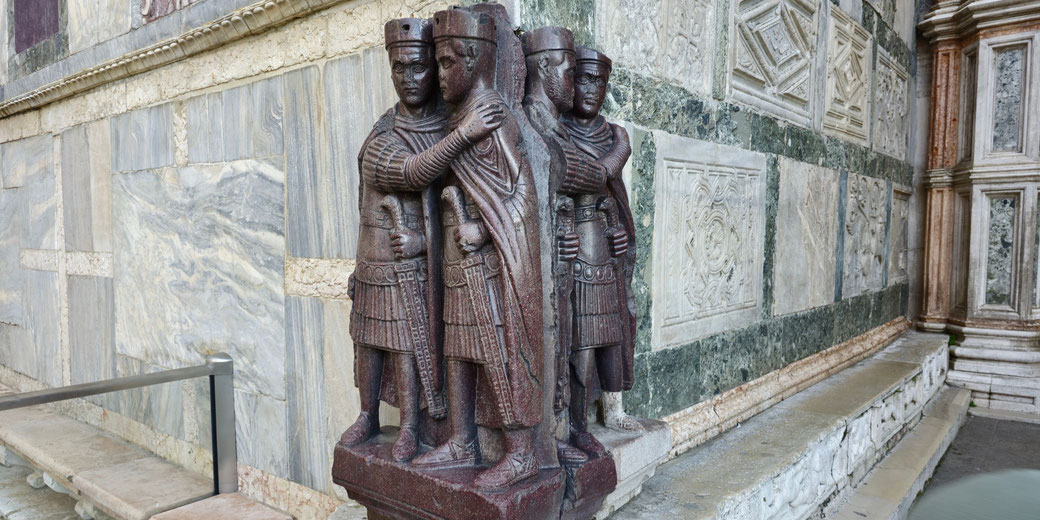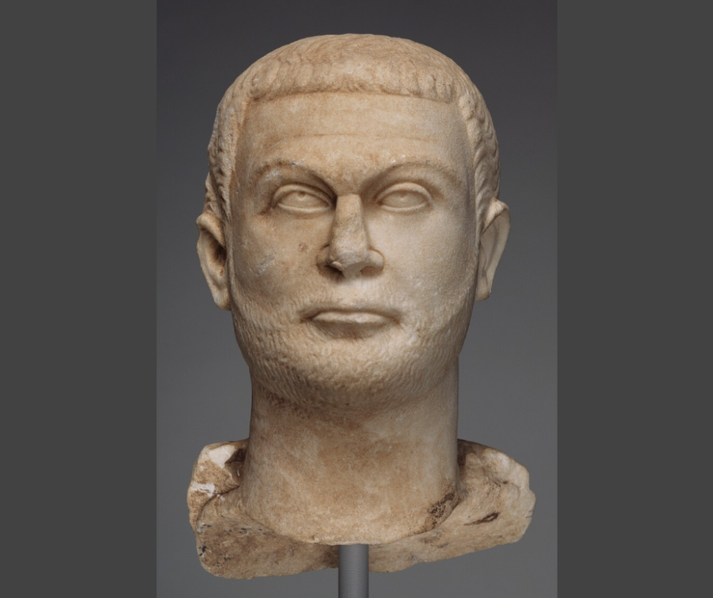Why the Tetrarchy was a temporary fix that failed to save Rome

By the late third century AD, the Roman Empire faced administrative and military pressures that weakened political stability.
A string of short-lived emperors, civil wars, and external invasions had pushed the empire to the brink. In response to this worsening crisis, Emperor Diocletian introduced a major reorganisation of imperial power known as the Tetrarchy in AD 293.
This new political system divided authority among four rulers in an attempt to restore order and ensure the survival of the Roman state.
Establishing the Tetrarchy
Established during Diocletian’s reign, the Tetrarchy aimed to solve two main problems that had troubled Rome during the Crisis of the Third Century: the concentration of power in a single ruler and the resulting succession crises.
Diocletian first appointed Maximian as Caesar in 285 and elevated him to Augustus the following year, and Diocletian placed him in charge of the western half of the empire while retaining control over the east.
This created a dual rule system, but Diocletian went further. In 293, each Augustus appointed a junior emperor, titled Caesar.
Diocletian chose Galerius, and Maximian chose Constantius Chlorus. The empire now had two senior emperors and two juniors, each responsible for governing and defending a specific region.

Under this system, the Roman world was split into four parts. Diocletian controlled the eastern provinces from Nicomedia, where he focused on Asia Minor, Egypt, Syria, and the eastern frontier.
Galerius managed the Balkans and the Danube frontier from Sirmium, which also included Thrace.
In the west, Maximian ruled from Mediolanum, where he managed Italy and North Africa.
Constantius operated from Augusta Treverorum, known today as Trier, which covered Gaul and Britain.
Each emperor maintained his own court, army, and administrative centre, but all operated under a common system that focused on cooperation and shared goals.
These centres of power became key imperial capitals, which was an intentional distribution of power aimed at improving regional management.
Function and Purpose of the System
This new arrangement was not simply a power-sharing agreement. It was an attempt to formalise the succession of emperors and lower the chance of civil war.
Each Caesar was expected to succeed his Augustus, creating a stable line of succession.
The Tetrarchy also allowed the emperors to react faster to threats, as each was based closer to the empire’s borders.
During this period, the emperors worked together to put down rebellions, drive off barbarian attacks and launch campaigns against Persia.
Diocletian also introduced wide-ranging reforms in taxes and the military, which created a foundation for a more skilled and financially secure imperial system.
Despite its initial success, which restored stability, the Tetrarchy began to fall apart soon after Diocletian and Maximian abdicated on 1 May 305.
Galerius and Constantius became the new Augusti, and two new Caesares, Severus and Maximinus Daza, were appointed.
However, Constantius died suddenly in 306, and his troops in Britain declared Constantine emperor, and they skipped the established order of succession.
At the same time, Maxentius, the son of Maximian, seized power in Rome and declared himself emperor.
The carefully planned balance collapsed into a series of civil wars. The key moment came in 312 at the Battle of the Milvian Bridge, when Constantine defeated Maxentius and gained control of the western empire.
Collapse and Impact of the Tetrarchy
By 313, the system of four emperors had given way to a new fight for sole control of the empire.
Constantine the Great, after he defeated his rivals in the west, went on to defeat Licinius in the east in 324, joining the empire under one ruler.
That same year, the Edict of Milan was issued by Constantine and Licinius, which gave full legal rights and the return of property to Christians.
The Tetrarchy had failed as a lasting solution, but it left a strong effect on Roman rule.
The division of the empire into eastern and western regions, made official under Diocletian, provided the basis for the later split between the Eastern and Western Roman Empires.
The reorganisation of administration that followed created twelve dioceses, which were grouped into four prefectures, a structure more fully implemented under Constantine and his successors and one that affected later Byzantine administration.
In its structure and aim, the Tetrarchy was a turning point in the history of imperial rule.
It introduced a model of divided authority that met the needs of the empire's vast size and variety.
It also moved away from the illusion of a republican system under a princeps, and the system instead moved to strict one-man rule.
Emperors now wore ceremonial robes, held detailed court ceremonies, and claimed support from the gods, especially Diocletian, who associated himself with Jupiter and adopted the title Dominus et Deus.
This change helped shift the basic ideas of Roman rule from shared public authority to the emperor's status.
What do you need help with?
Download ready-to-use digital learning resources
Copyright © History Skills 2014-2025.
Contact via email
With the exception of links to external sites, some historical sources and extracts from specific publications, all content on this website is copyrighted by History Skills. This content may not be copied, republished or redistributed without written permission from the website creator. Please use the Contact page to obtain relevant permission.





